Cityscape photography captures the dynamic essence of urban life, venturing into the heart of bustling metropolises. This captivating art form freezes the urban jungle's pulsating energy in a single frame, offering a unique perspective on bustling streets, towering skyscrapers, and illuminated landmarks.
Whether you're an amateur photographer or a passionate traveler with a camera, delving into cityscape photography opens up creative possibilities.
In this introductory article, we will unlock the essentials of cityscape photography, unveiling tips and techniques to help you master this intriguing genre. From understanding the interplay of light and shadow to framing breathtaking compositions amidst architectural marvels, we'll guide you step-by-step. Furthermore, we'll delve into equipment suggestions, editing insights, and strategies to add a personal touch to your urban captures.
Embark on this journey as we illuminate the path to mastering cityscape photography and unleash your inner artist upon the urban tapestry.
What Is Cityscape And How To Capture It
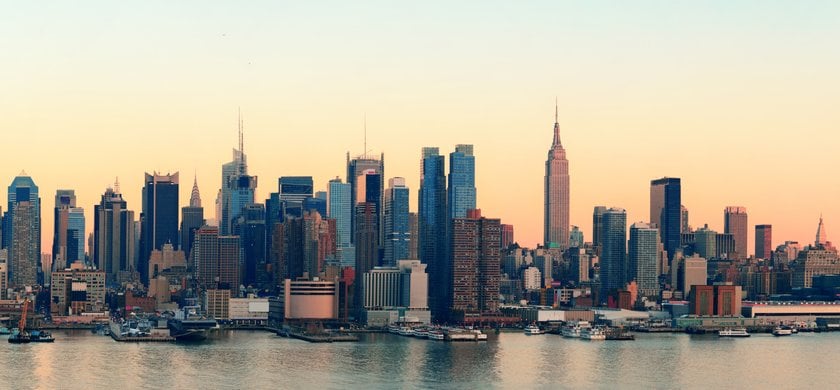
Cityscape refers to the visual representation or photograph of an urban area, showcasing its architectural structures, streets, buildings, and overall city environment. It captures the unique features and characteristics of a city's skyline and surrounding elements. Cityscape photography aims to portray urban life's dynamic and often bustling nature, showcasing the grandeur of towering skyscrapers and the intricate details of streets, bridges, and landmarks. It's a genre of photography that seeks to convey a city's mood, energy, and essence through carefully composed images that highlight its urban landscape.
Pictures of cityscapes encompass the art of capturing the captivating urban environment. It's about freezing the vibrant city life into compelling images that tell stories of bustling streets, towering buildings, and illuminated landmarks. To embark on this photographic journey, you'll need a camera that allows manual settings, which lets you control aspects like aperture, shutter speed, and ISO. Also, let's talk about what you must look for when taking city photos.
Looking For A Profitable Light

When photographing cityscapes, pay attention to lighting. The "golden hours," which occur during sunrise and sunset, are ideal times to capture cityscapes. The sun's angle during these hours casts a warm, soft glow that enhances the city's beauty.
During midday, when the sun is harsh, the contrasts can be strong, resulting in harsh shadows. To avoid this, you can explore indoor shots or find areas with diffused light, such as shaded streets or overcast days. Experiment with long exposures during twilight or nighttime to capture the city's illuminated charm.
The Rule of Thirds is a helpful guideline for composition. Imagine breaking your frame into a 3x3 grid and placing key elements along these lines or at their intersections. It adds balance and interest to your photos.
In cityscape photography, lighting variations are constant due to artificial lights and changing weather. Adaptability is key; consider adjusting your camera settings to accommodate varying light intensities. Post-capture, minor adjustments can be made to refine exposure and colors without altering the scene's authenticity.
By understanding how light interacts with the urban landscape, you can elevate your cityscape photography, capturing stunning moments that showcase the city's most captivating luminance.
Exploring Angles And Perspectives
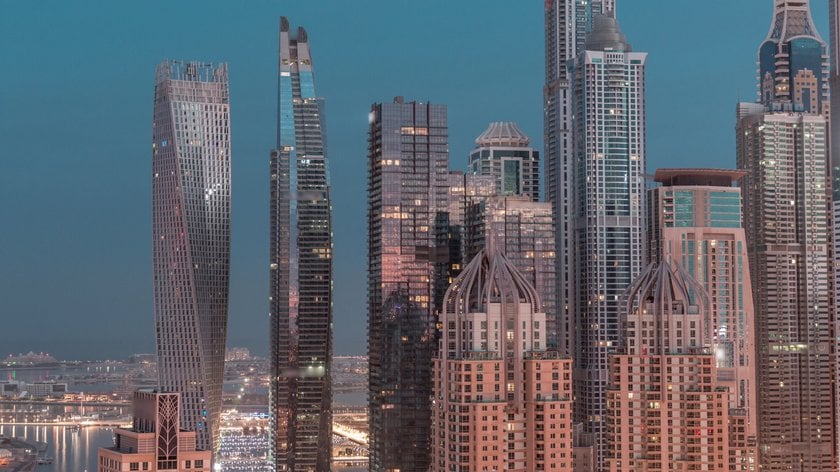
Cityscape photography offers an exciting canvas for creativity through different angles and perspectives. Experimenting with these can breathe life into your images and provide a fresh outlook on urban scenes. To stabilize your camera, use a tripod, especially during low light conditions.
- Wide-Angle Views: Capturing a sweeping cityscape in its entirety is achievable with a wide-angle lens. This lens lets you encompass vast skylines, streets, and structures in one frame. It's especially effective when showcasing the grandeur of a city's architecture.
- Low-Angle Shots: Taking shots from ground level or a lower vantage point adds drama and uniqueness to your photos. This technique can emphasize foreground elements like cobblestone streets or create striking contrasts against towering buildings.
- High-Angle Shots: You can capture the city from a bird's-eye view from an elevated position, such as a rooftop or hill. This perspective offers a different dimension, highlighting patterns, intersections, and the city's overall layout.
- Leading Lines: Utilize lines in your composition, such as roads, bridges, or building edges, to guide the viewer's gaze through the image. This technique adds depth and draws attention to key focal points.
- Framing Elements: Incorporating natural or architectural frames within your photo can create a sense of depth and context. For instance, shoot through a window, archway, or tree branches to add an interesting frame around your subject.
- Reflections: Seek out reflective surfaces, like puddles, windows, or bodies of water, to capture cityscapes with a unique twist. Reflections can add symmetry and a touch of magic to your images.
You can capture cityscapes in new and exciting ways by embracing these varied angles and perspectives. Each viewpoint offers a different story, allowing you to showcase the urban environment from fresh and captivating angles.
Adding Dynamic Energy
Mastering shutter speed is essential to infuse your cityscape photographs with a sense of motion and energy. Shutter speed refers to when your camera's sensor is exposed to light. Adjusting this setting can lead to captivating effects that enhance the visual narrative of your urban captures.
Freezing Action. A fast shutter speed, such as 1/500th of a second or faster, freezes movement in its tracks. It is ideal for capturing sharp images of moving vehicles, people, or any fast-paced activity. The result is crisp details even in the midst of motion.
Create Motion Blur. Alternatively, a slower shutter speed — around 1/30th of a second or slower—can make a captivating sense of motion blur. This technique works well when capturing moving traffic, water bodies, or bustling crowds. The intentional blur adds a dynamic, artistic touch to your photos.
Mastering shutter speed allows you to control the pace of your cityscape photographs, making them more engaging and visually striking. Experiment with different settings to achieve the desired effect, and watch as your images come alive with the energy of the urban environment.
Illuminating Urban Beauty After Dark
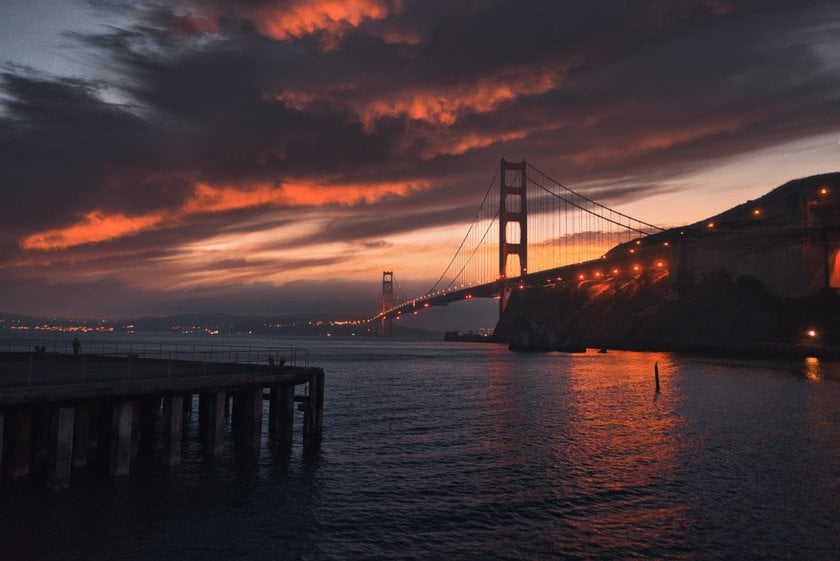
Cityscape night photography is a captivating genre that unveils the urban landscape's unique charm under the cloak of darkness. As the sun sets and city lights begin to twinkle, photographers have the opportunity to capture the city in a whole new light — quite literally.
Mastering Low Light: Nighttime cityscapes demand an understanding of low-light conditions. Utilize a tripod to stabilize your camera and prevent blur. Choose a low ISO setting to reduce noise, and open up your aperture to allow more light into the camera.
Capturing Light Trails: You can capture mesmerizing light trails using an even slower shutter speed, like a few seconds or more. This effect is achieved by photographing moving light sources, such as car headlights or city lights at night. The lights leave streaks of color across the frame, showcasing the city's vibrant movement.
Highlighting Skylines: The city's skyline is magical at night. Photograph iconic buildings and landmarks illuminated against the night sky. Experiment with different angles and compositions to capture the skyline's grandeur.
Playing with Reflections: Bodies of water offer fantastic opportunities for reflection shots. The city's lights dancing on the water's surface can create surreal, mirror-like effects that add depth and intrigue to your images.
City Nightlife: Capture the vibrant nightlife by photographing bustling streets, outdoor cafes, and lively gatherings. The contrast between illuminated spaces and the darkness around them creates a captivating atmosphere.
Long Exposures: Experiment with long exposure shots to capture the passage of time. Keeping the shutter open for an extended period allows you to create dreamy, ethereal images that showcase the city's lights as they paint intricate patterns across the frame.
Cityscape night photography invites you to explore the city from a fresh perspective, embracing the interplay between light and shadows. You can create enchanting images that capture the urban landscape's nocturnal beauty by mastering the art of shooting in low-light conditions.
Post-Processing Cityscape Photographs
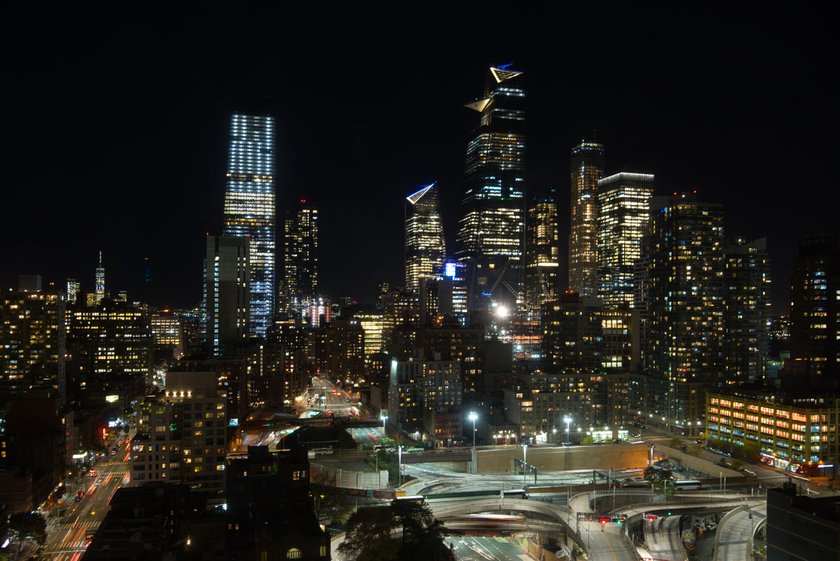
Post-processing is vital in elevating your cityscape photographs' visual impact. It's a creative process that allows you to refine colors, contrast, and overall mood while maintaining the authenticity of the scene you captured. Here is a simple guide with basic adjustments to post-process your cityscape images effectively:
- Adjust the exposure, contrast, and highlights to enhance the tonal range. Use caution to avoid overexposing or losing detail in bright areas.
- Correct the white balance to ensure accurate colors. It is crucial, especially in cityscapes with various artificial light sources.
- Boost or fine-tune colors to make them pop. Adjust saturation and vibrance to maintain a natural look while emphasizing the city's vibrant elements.
- Apply subtle sharpening to enhance details without creating an unnatural appearance. Use masking to sharpen specific areas.
- Nighttime cityscapes may have noise due to low light conditions. Use noise reduction tools to achieve a cleaner look while preserving sharpness.
- Correct any lens distortion to ensure straight lines and accurate proportions.
If you are new to editing photos, Luminar Neo, a Photo Editor For Beginners, is an excellent choice. It features a simple interface with all the necessary tools. One of its standout features is Accent AI, which automatically analyzes your photo and optimizes exposure, contrast, and color depth, saving you time and effort. Pictures of cityscapes, which also capture the sky, can be processed using artificial intelligence technologies. It makes them more unique. For example, its Sky AI tool can process and enhance the sky in your photos, resulting in stunning images.
Advanced yet easy-to-use photo editor
Get Luminar Neo NowRemember, post-processing aims to enhance the visual impact of your cityscape images while maintaining their authenticity. Avoid excessive edits that might distort the scene or create an unrealistic representation. With practice, you'll develop a keen eye for the right balance between enhancement and realism, resulting in stunning cityscape photographs that capture the urban beauty you witnessed through your lens.
Bottom Line
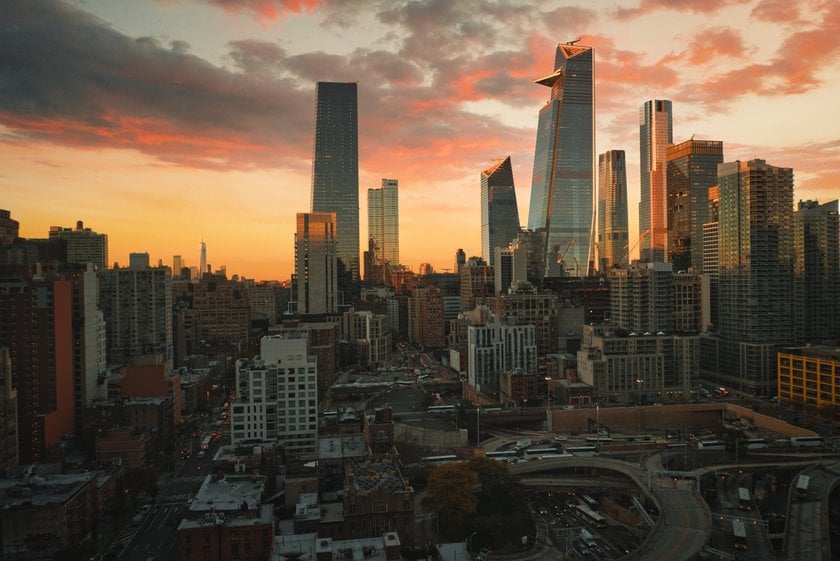
City perspective photography is an art that thrives on exploring the diverse viewpoints within urban landscapes. Whether it's the glittering skyline under a starlit sky, the interplay of light and shadow along bustling streets, or the quiet corners that hold untold stories, cityscape photography becomes your medium to share the myriad facets of the metropolis that captivate your senses.
Consider the composition: frame your shots using the rule of thirds or leading lines to create balance and depth. Incorporate foreground elements for added interest. Experiment with various angles and perspectives. Capture wide shots to encompass the entire cityscape, and zoom in to highlight intricate details. Incorporate movement by adjusting your shutter speed – faster to freeze action or slower to capture light trails. Post-capture, enhance your photos with basic editing to fine-tune colors, contrast, and exposure. Use modern technologies to give your photo uniqueness.













